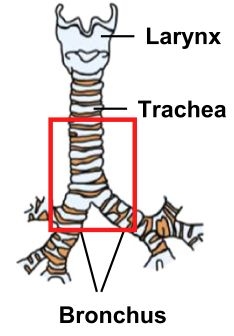 HSCI investigators have determined which of the three types of airway cells are primarily responsible for excess mucous production in pulmonary diseases such as asthma, cystic fibrosis, and bronchitis, hastening the day when it may be possible to develop treatments.
HSCI investigators have determined which of the three types of airway cells are primarily responsible for excess mucous production in pulmonary diseases such as asthma, cystic fibrosis, and bronchitis, hastening the day when it may be possible to develop treatments.
While studying asthma induced in mice, HSCI Principal Faculty member Jayaraj Rajagopal, MD, and his team found high volumes of mucous cells not normally present. They couldn’t figure out, however, where the mucous was being produced. “There’s been a lot of confusion, and a lot of evidence based on suggestive data,” Rajagopal said. “So we did lineage tracing—the labeling of a cell so that its descendants can be followed—and we found the answer.”
Through lineage tracing, postdoctoral fellow Ana Pardo-Saganta, PhD, was able to show that the hairlike ciliated cells that push mucous along the airways are never responsible for excess mucous production in asthma. In unpublished work, the lab found that secretory cells are the ones that become mucous cells in acute forms of asthma. The researchers suspect that these cells also contribute to allergic diseases over time.
The study results suggest that secretory cells produce the vast majority of mucous. Research can now be more focused on those cells. “If you look at a single cell in isolation and you know it’s the important cell, then essentially what you do is eliminate all the other noise,” Rajagopal said.
The physician-scientist notes, however, that while ciliated cells are not responsible for the excess mucous in asthma, they are not necessarily innocent in every situation. “I would never say a ciliated cell couldn’t do something different in a different setting or disease, but in asthma it doesn’t seem to contribute,” he said.
Normal mucous is necessary to clear airways and fight disease, but excess mucous is the cause of decreased quality of life and even lethal complications for patients with pulmonary diseases such as asthma, which causes over 5,500 deaths each year according the National Institutes of Health. Using information from his lineage tracing experiments, Rajagopal now wants to find out how much mucous production is healthy to inhibit.
This work was supported by an HSCI Junior Investigator Grant and the National Institutes of Health.
Source: Ciliated Cells of Pseudostratified Airway Epithelium Do Not Become Mucous Cells after Ovalbumin Challenge. American Journal of Respiratory Cell and Molecular Biology. March 2013.
Photo: Anatomy of the Airway (Credit: Jayaraj Rajagopal/AJRCMB)
